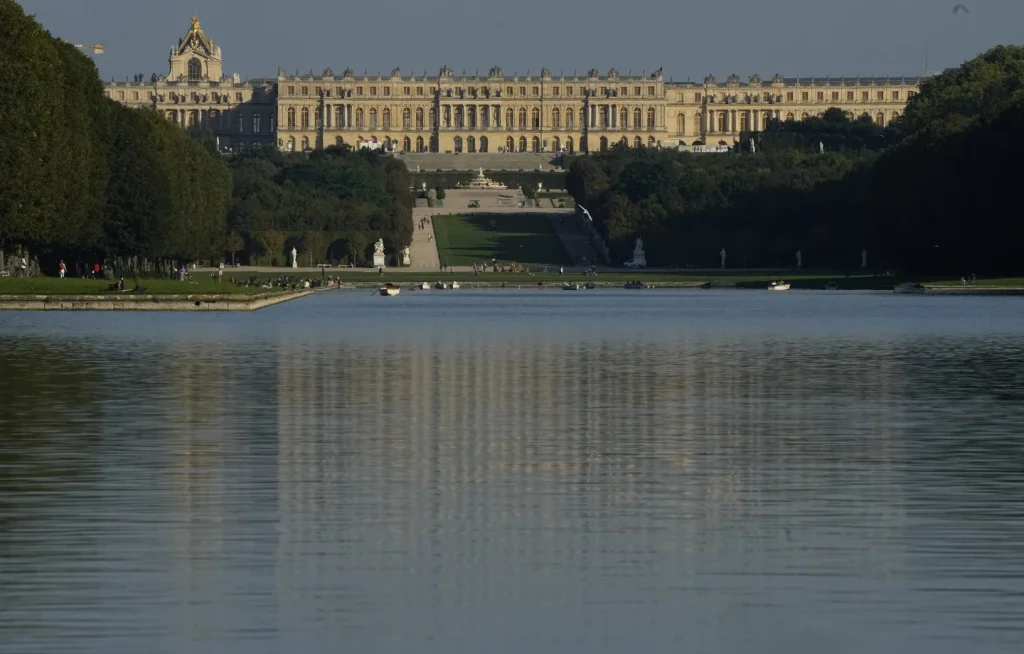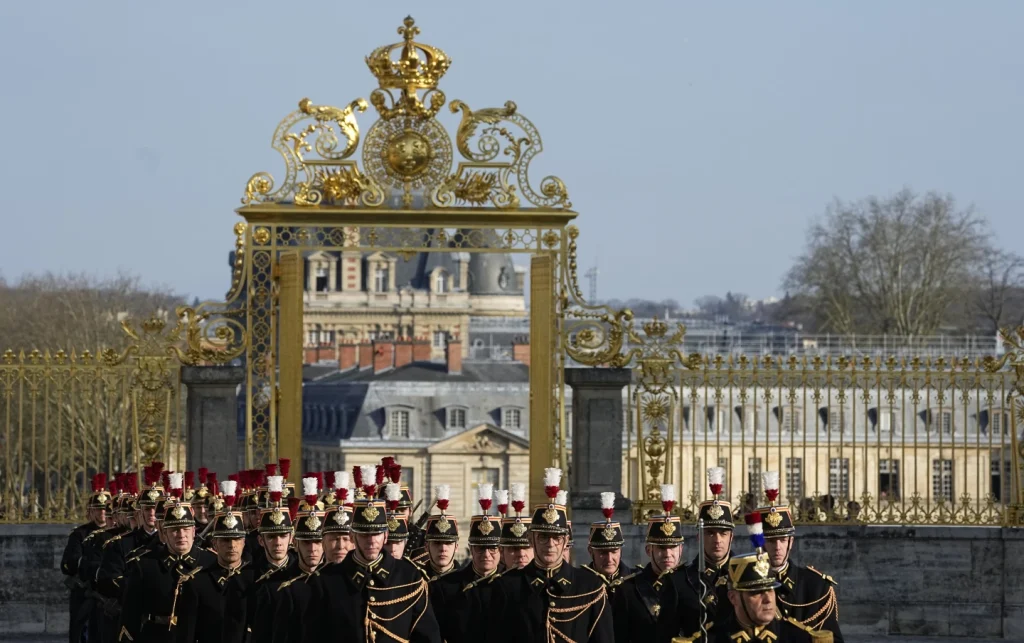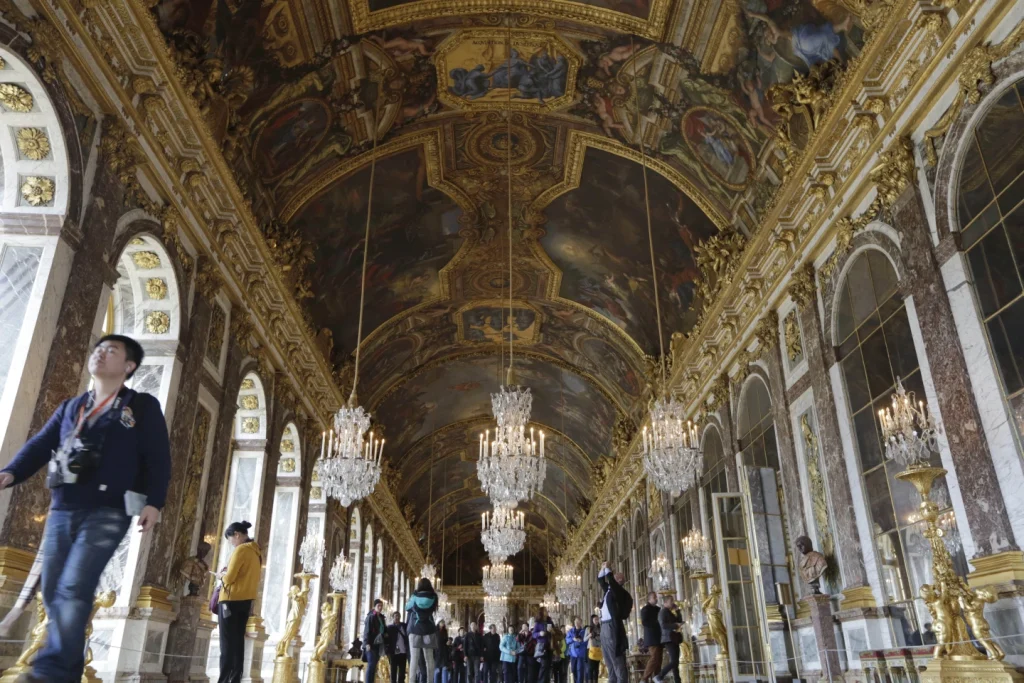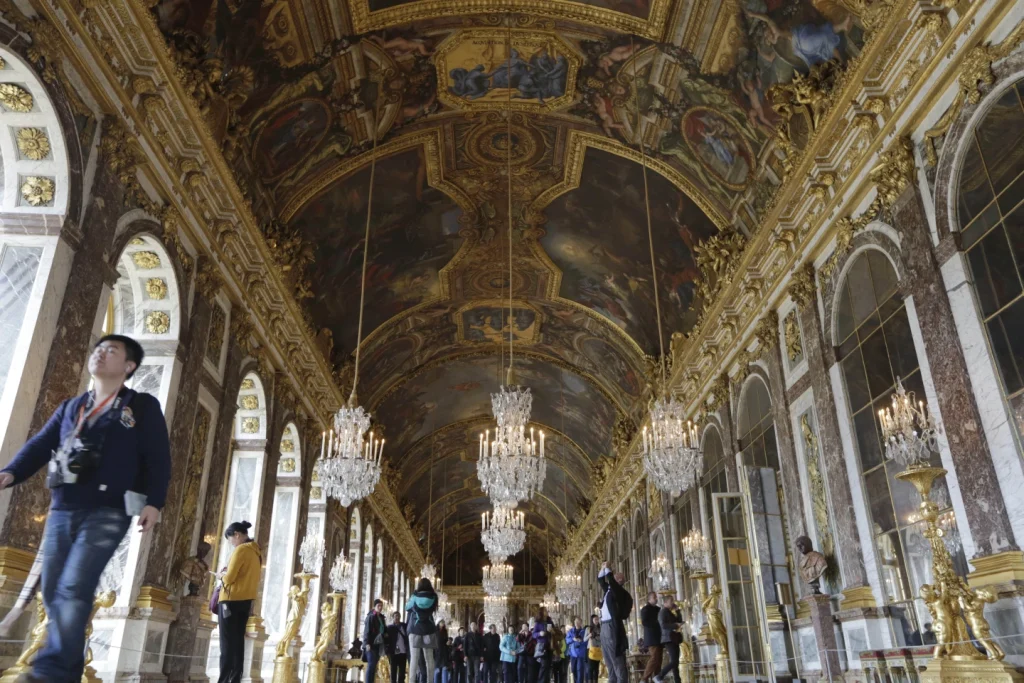France is gearing up to welcome King Charles III of the United Kingdom and his wife, Queen Camilla, on their state visit to the country, with the Palace of Versailles serving as the centerpiece for this important occasion.
This iconic monument, which has stood as a symbol of French grandeur and opulence for over 400 years, will play host to a grand dinner in honor of the royal couple, with more than 150 guests in attendance at the Hall of Mirrors.
The visit, which spans three days and includes stops in Paris and Bordeaux, is a testament to the strong relationship between France and the United Kingdom, and serves as a reminder of the historical and cultural ties that bind these two nations together.
As the world watches this momentous occasion unfold, all eyes will be on the Palace of Versailles, a timeless monument that continues to captivate and inspire visitors from around the globe.
The recent unveiling of the newly opened gallery at the Palace of Versailles marks a significant milestone in the preservation and presentation of its rich history.
From its humble beginnings as a modest hunting lodge in 1623, the Palace has evolved into an iconic symbol of opulence and grandeur.
This gallery now serves as a captivating journey through time, meticulously tracing the Palace’s transformation and the pivotal role it has played in shaping the course of history.
Spanning several centuries, this immersive experience offers visitors a unique opportunity to delve into the past and witness the grandeur of the Palace’s architecture and the magnificence of its interiors.
Moreover, it sheds light on the remarkable diplomatic events that unfolded within its walls, including the notable visits of Charles’ predecessors, which have left an indelible mark on the annals of history.
As one wanders through this gallery, they cannot help but be awestruck by the sheer magnitude of the Palace’s legacy and its enduring significance as a testament to human ingenuity and artistic brilliance.
The meticulously curated exhibits and informative displays provide a comprehensive overview of the Palace’s evolution, allowing visitors to gain a deeper understanding of the historical context and the individuals who have shaped its destiny.
The opening of this gallery represents a pivotal moment in the ongoing efforts to preserve and share the cultural heritage of the Palace of Versailles, ensuring that future generations can continue to marvel at its splendor and appreciate its historical significance.
The dinner held on Wednesday, as announced by the office of French President Emmanuel Macron, serves as a poignant reminder of the state visit undertaken by Queen Elizabeth II in 1972.
During that historic occasion, she was warmly welcomed at the Palace by President Georges Pompidou. It is noteworthy to mention that King Charles, upon learning of this significant event in his mother’s life, expressed a keen interest in emulating her footsteps.
This decision, as relayed by Macron’s office, showcases not only the respect and admiration that King Charles holds for his mother but also his desire to forge a similar path in his own reign.
Such a gesture undoubtedly highlights the enduring legacy of Queen Elizabeth II and the profound impact she has had on the British monarchy.
In the annals of history, the Palace of Versailles stands as a testament to the grandeur and opulence of the French monarchy.

It has witnessed countless significant events and hosted a myriad of distinguished guests from all corners of the globe.
One such notable visitor was Queen Elizabeth II, who graced the palace with her presence not once, but twice.
In 1958, she embarked on a visit to Versailles, a decade before ascending to the throne. This visit, however, was not her first encounter with the illustrious palace.
A decade earlier, in her pre-royal days, the future Queen of England had the privilege of exploring the resplendent halls and gardens of Versailles.
The significance of her visits, both as a princess and as a reigning monarch, cannot be overstated. They serve as a testament to the enduring allure and universal appeal of this architectural marvel.
Catherine Pégard, the esteemed president of the Palace of Versailles, eloquently captured the essence of this timeless establishment when she referred to it as a “never-ending story.”
Indeed, the narrative of Versailles encompasses not only the visits of French schoolchildren, who come to learn about their nation’s history, but also the presence of esteemed dignitaries such as the King of England.
Moreover, it extends to the countless tourists who journey from far-flung corners of the world, particularly from Asia, seeking to immerse themselves in the rich tapestry of Versailles’ storied past.
The palace, with its architectural splendor and historical significance, continues to captivate and inspire all who have the privilege of setting foot within its hallowed halls.
According to the Associated Press, the upcoming royal banquet at the Hall of Mirrors promises to be a grand affair.
As one of the most iconic and opulent spaces within the Palace of Versailles, this majestic hall is usually teeming with a chaotic crowd of photo-snapping tourists from across the globe.
However, on Wednesday, it will be closed to visitors in order to make necessary preparations for the highly anticipated event.
While no specific details have been provided about the menu, the French presidency has assured that it will serve as an exceptional platform to showcase France’s unrivaled cultural and gastronomical excellence.
With its rich history and breathtaking beauty, the Hall of Mirrors is undoubtedly the perfect backdrop for an evening of regal splendor and refined indulgence.
As the anticipation builds, it is clear that this royal banquet will not only be a celebration of the monarchy but also an ode to the nation’s enduring legacy of art, culture, and culinary mastery.

Charles’ visit to the Palace will add another significant chapter to its illustrious history, which dates back to the reign of King Louis XIII and extends through the turbulent era of the French revolution to the present day.
This rich historical narrative is now being showcased on the ground floor of the Palace in the newly inaugurated Gallery of the History of the Palace.
Spanning across 11 rooms, each with its own thematic focus and arranged in a largely chronological manner, the gallery presents over 120 carefully selected works of art.
The aim is to provide visitors from around the globe with an immediate and comprehensive understanding of the complex history of this iconic palace.
The exhibition brings together recently acquired pieces alongside long-forgotten paintings and art treasures that were previously kept in reserve.
These artworks have now been repositioned and expertly enhanced to offer visitors an unparalleled visual experience.
Laurent Salomé, the esteemed director of the National Museum of the Palace of Versailles and Trianon, has enthusiastically stated that the exhibition boasts an impressive array of masterpieces.
The statement, “Our intention was to create a first great moment of pleasure for visitors,” is a reflection of the underlying philosophy that guides the approach of the creators of the Versailles Palace.
The creators of the Palace, who were acutely aware of the anticipation and excitement that visitors felt as they approached the Palace, were determined to provide an experience that would not disappoint.
They understood that visitors had traveled long distances and had dreamed of visiting the Palace for a long time.
Therefore, they wanted to ensure that the first experience of the Palace was one of pleasure and excitement.
They recognized that a boring lesson would not be the best way to start the visit, and instead, they sought to create an experience that would be memorable and enjoyable.
This approach reflects a deep understanding of the needs and expectations of visitors, and a commitment to providing an experience that exceeds those expectations.
It is this commitment to excellence that has made the Versailles Palace one of the most popular tourist destinations in the world, and a testament to the enduring power of great design and thoughtful planning.
The Palace of Versailles is an iconic and historic monument that has been a symbol of French grandeur and opulence for centuries.
Originally built as a hunting lodge by Louis XIII, it was transformed into a magnificent palace and gardens by his son, Louis XIV.
The Palace is a testament to the power and vision of the French monarchy, as well as the incredible skill and artistry of the many artists and craftsmen who contributed to its construction and decoration.
With 2,300 rooms spread over 63,154 square meters, it is a vast and impressive complex that continues to attract millions of visitors from around the world each year.
The gallery of history within the Palace provides a fascinating glimpse into the lives of the monarchs and their families, as well as the important historical events that have taken place within its walls.
From the Chinese chamber of Queen Marie Leszczynska, which she partially painted herself, to the famous desk where the Treaty of Versailles was signed, the Palace is a treasure trove of fascinating stories and artifacts.
Salomé’s assertion regarding the Chateau de Versailles encapsulates the essence of a gradual transformation that has persisted through the centuries, thereby exemplifying the enduring vitality of this majestic edifice.
The Chateau de Versailles, a symbol of opulence and grandeur, has not only stood the test of time but has also evolved and adapted to the changing needs and tastes of each era.
From its inception as a modest hunting lodge in the 17th century to its transformation into a magnificent palace under the reign of Louis XIV, the Sun King, the Chateau de Versailles has witnessed a remarkable evolution.

Its architectural splendor, intricate gardens, and lavish interiors have served as a canvas for the expression of power, wealth, and artistic excellence.
As the centuries unfolded, subsequent monarchs and leaders have left their indelible mark on this iconic landmark, adding their own distinctive touch to its already illustrious history.
Today, the Chateau de Versailles stands as a testament to the enduring legacy of the past while also embracing the present, welcoming visitors from around the world to experience its timeless beauty and immerse themselves in the rich tapestry of French history.
